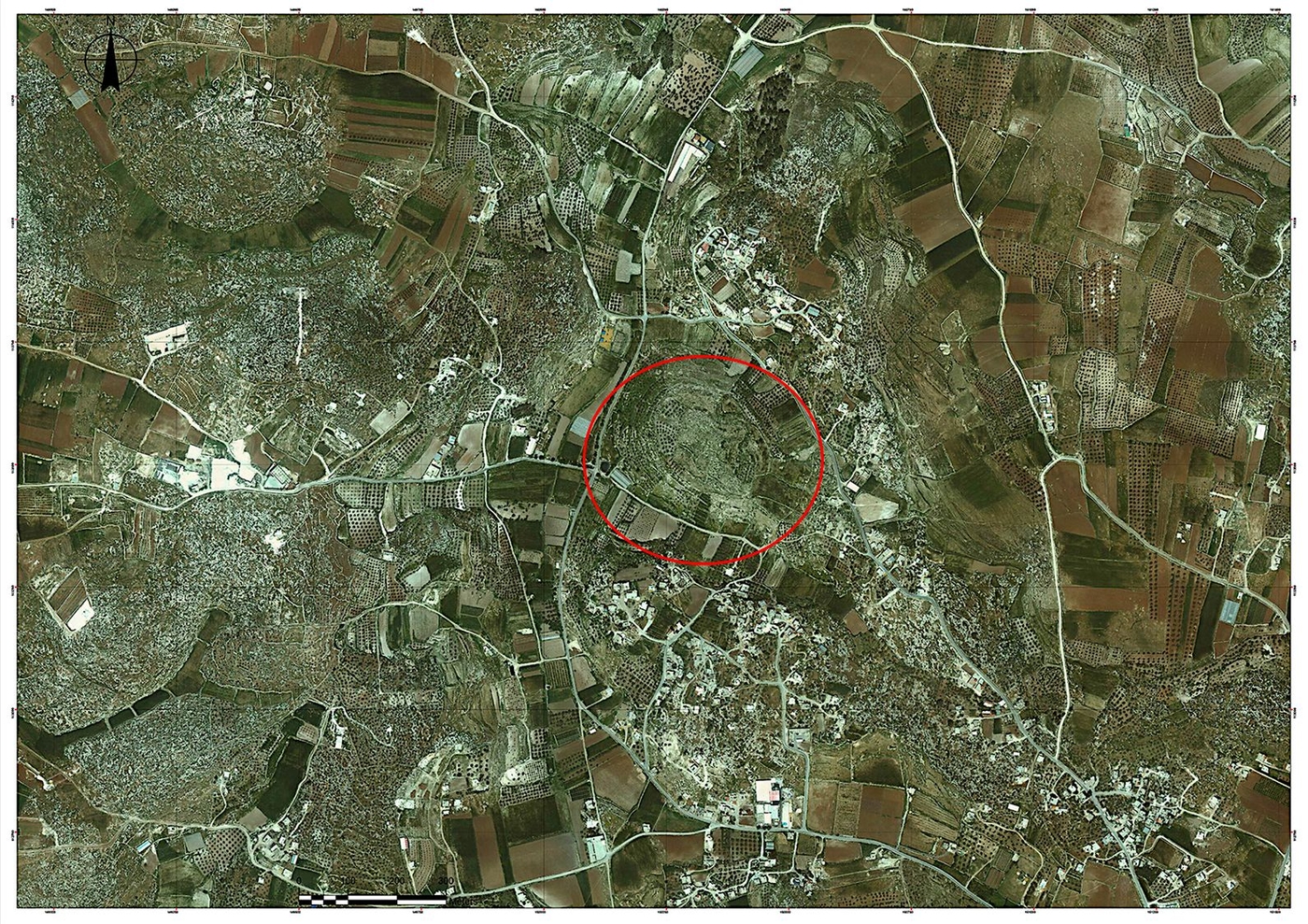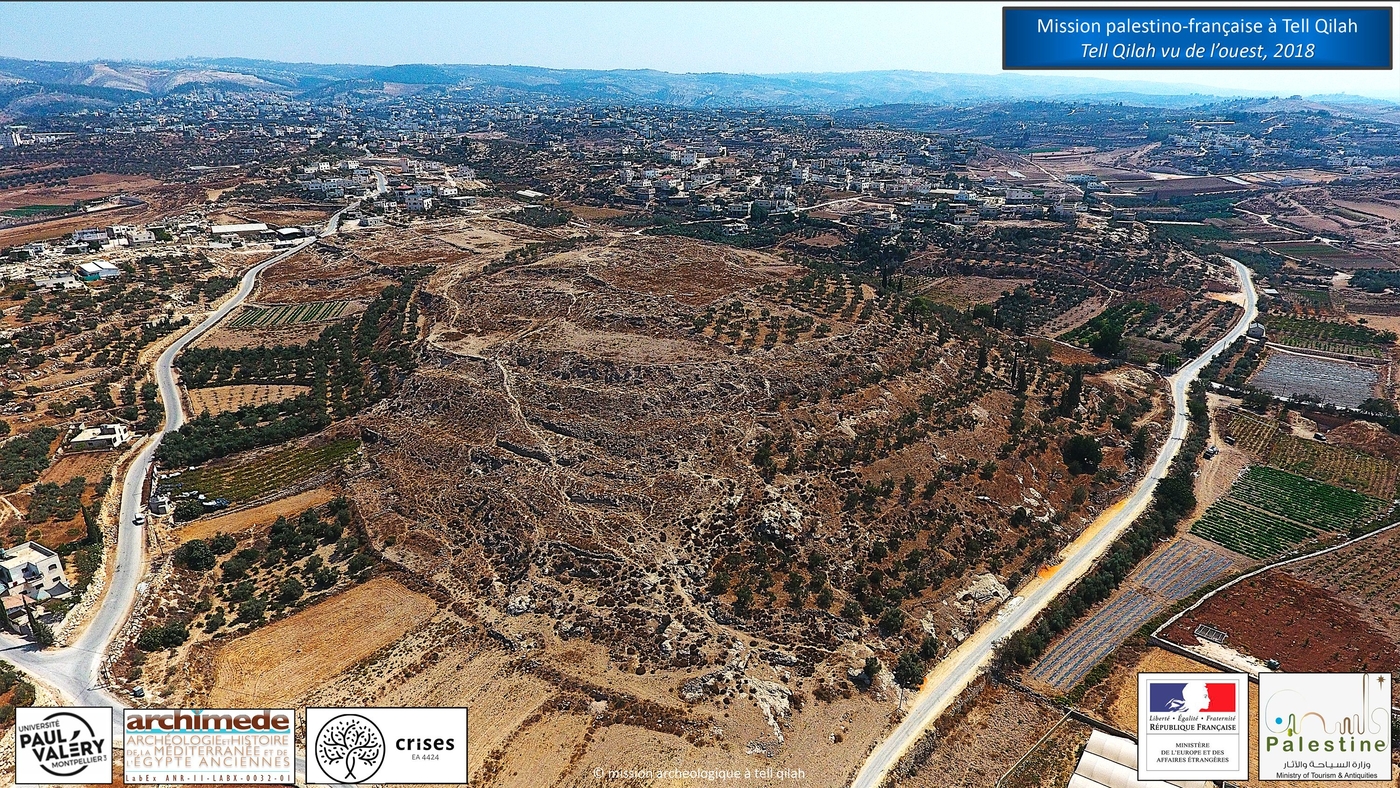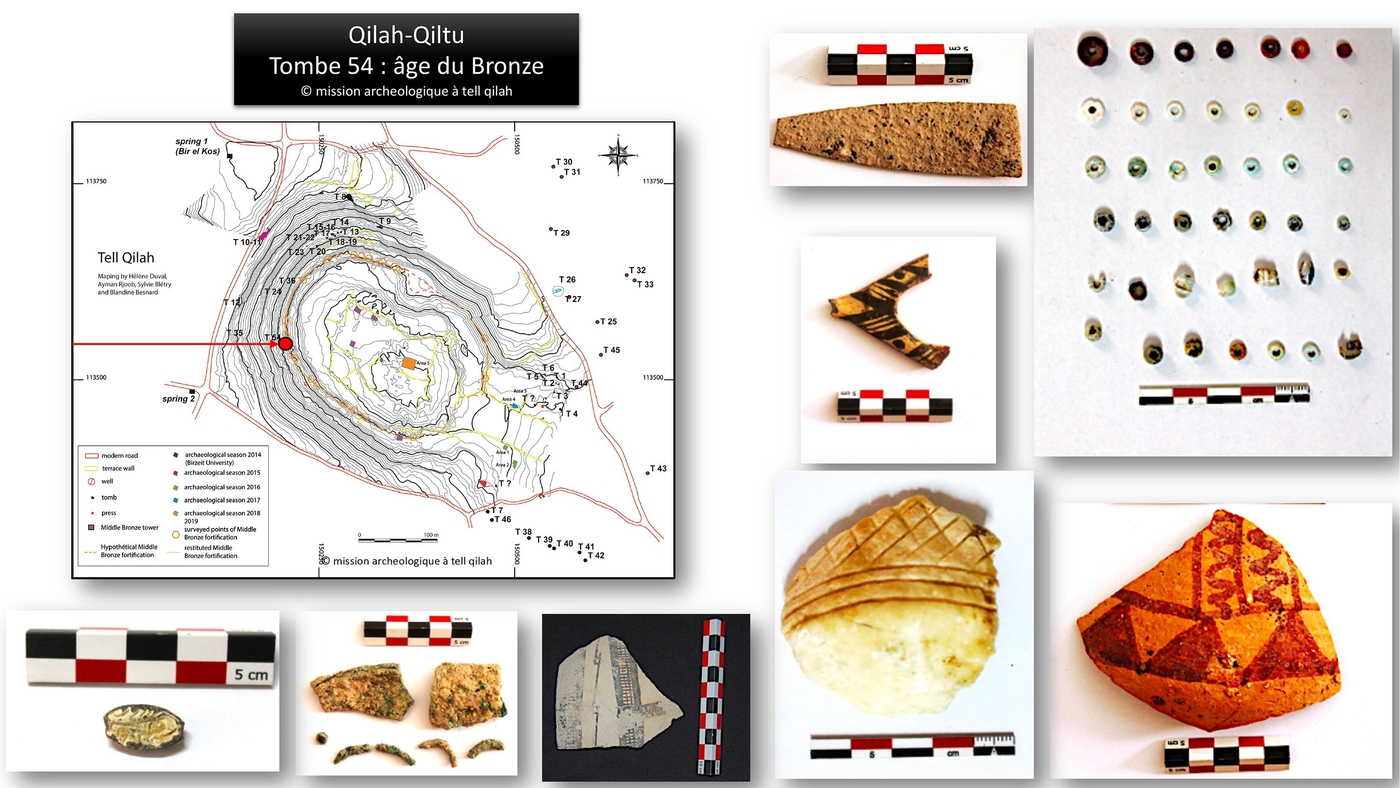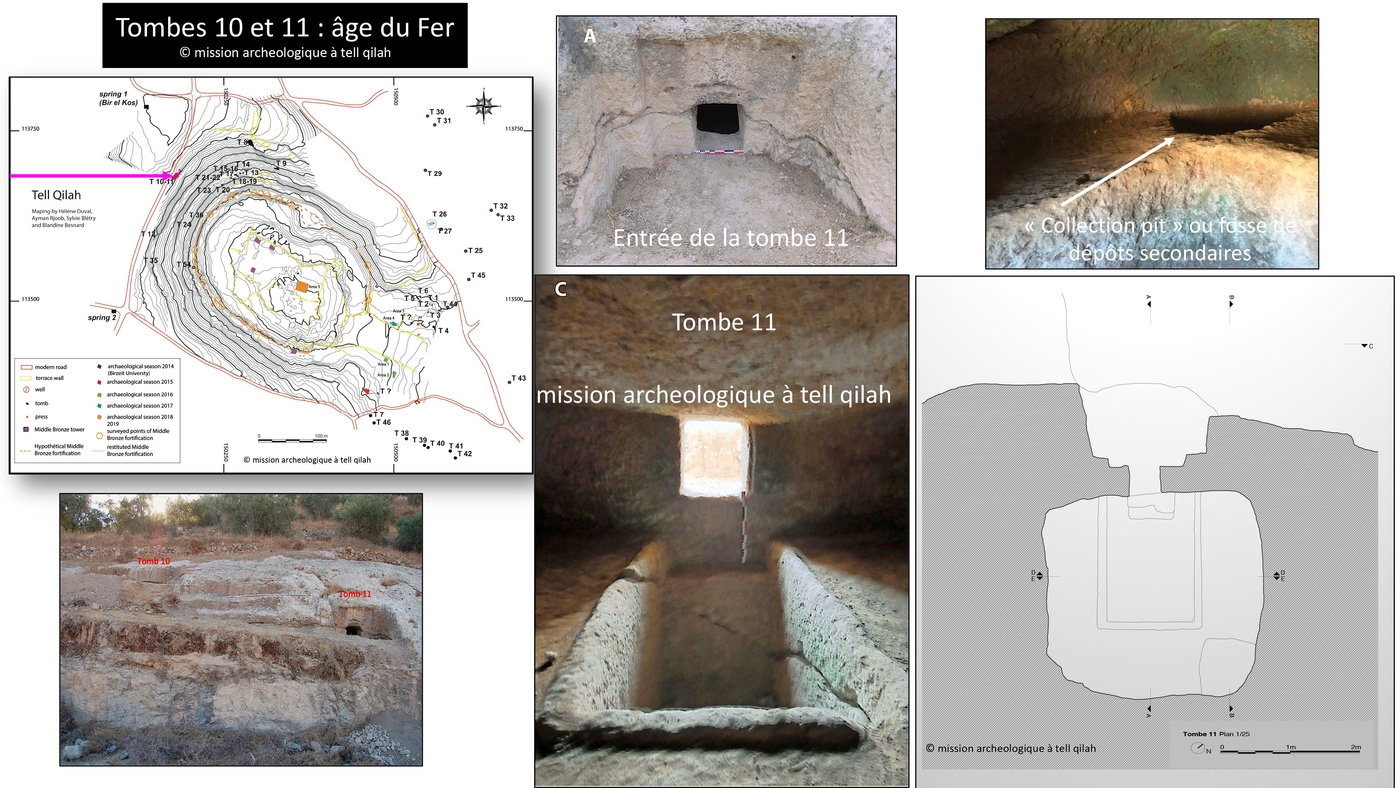Tell Qilah
A site well attested by written sources and recent surveys, fortified in the Bronze Age and Iron Age, and occupied almost without a break through to the present day. A rampart, habitats and tombs attest to the Hellenistic, Roman, Proto-byzantine and Islamic periods.
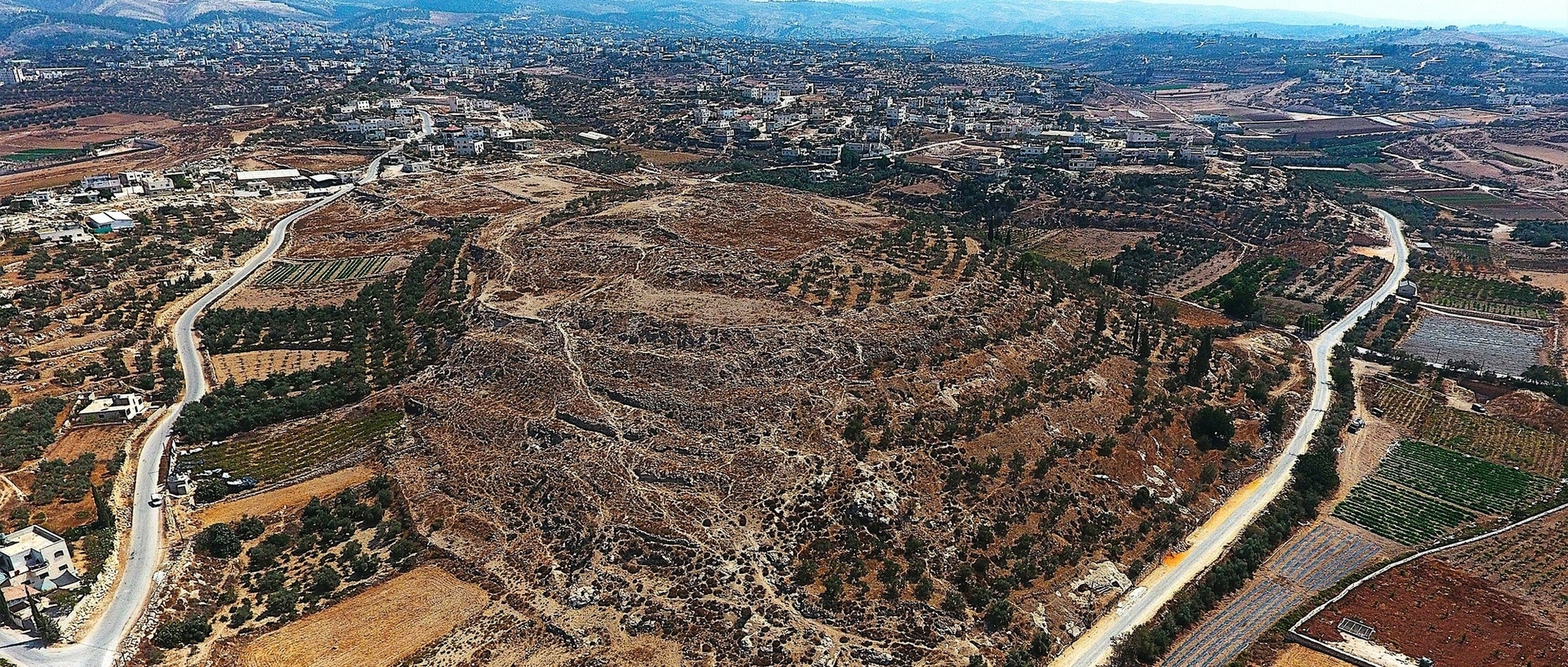
This is a wonderful opportunity to determine how this occupation developed, what changed and what remained the same over more than four millennia, and to explore the occupations that made the biggest impression based on previous surveys and excavations focusing on the Bronze Age, Iron Age, and the Palaeo-Christian era.
Tell Qilah, some twenty kilometres from Hebron, in the West Bank, often mentioned in antique sources, from the Amarna Letters (16th century BCE) to Sozomenos (5th century CE), had never been excavated.
First excavations
An episode in the life of David before he became king is set in this city in a long passage of the Ancient Testament (1 Sam 23: 1–13). Eusebius of Caesarea, writing in the city in the 4th century CE, mentions the tomb of a “minor prophet" in the Bible, Habacuc, who is said to have lived in the 6th century BCE. Travellers and explorers in the 19th century recognised the site and, based on their observations and a few pottery sherds, had already sketched out a timeline for the city. More recent surveys confirmed these dates.
Bronze Age
A team from Montpellier 3 University began to study this promising site in 2015. It has confirmed the dating of its fortification wall to the Middle Bronze Age (between 2000 BCE and 1200 BCE) and identified the footprint and uncovered the remains of an 11-metre-long tower, which probably stood alone. Numerous finds were discovered in a large and elaborate tomb dating from the end of the Bronze Age (Tomb 54).
Iron Age
During the Iron Age (1200–334 BCE), the fortification wall was strengthened by a glacis. During the most recent excavations, in 2019, the mission located some fifty tombs dated mainly to the same period, attesting to the intensity of the occupation, particularly Tombs 10 and 11.
The habitats from these earliest periods are located on a summit plateau and their excavation will provide the focus for future research.
A Byzantine habitat
The eastern part of the plateau contains traces of the Proto-byzantine habitat and a church with a mosaic floor and baptistry (with a dedicatory inscription) covered by the remains of a large Mamluk house and other more recent houses dated to the Ottoman period. Research will also continue in this sector. Most of the tombs remained in use up to the Proto-byzantine period. One particularly sumptuous tomb (Tomb 26) was built during the Herodian period and used until the 6th–7th century. Several presses and a building for craft or agricultural use show that the eastern slopes of the site were used intensively in Late Antiquity.
The project is supported by the French Ministry for Europe and Foreign Affairs on the advice of the Excavations Board (Commission des fouilles).
Useful links
- Publications by Sylvie Bletry on Académia
- Facebook page of the Keila project
- Sylvie Blétry, Hélène Duval, Chloé Girardi, Teddy Loupmon and Ayman Rjoob, "Tell Keila, résultats de quatre années de recherches", Syria [online], 95 | 2018, placed online 1 May 2021.


